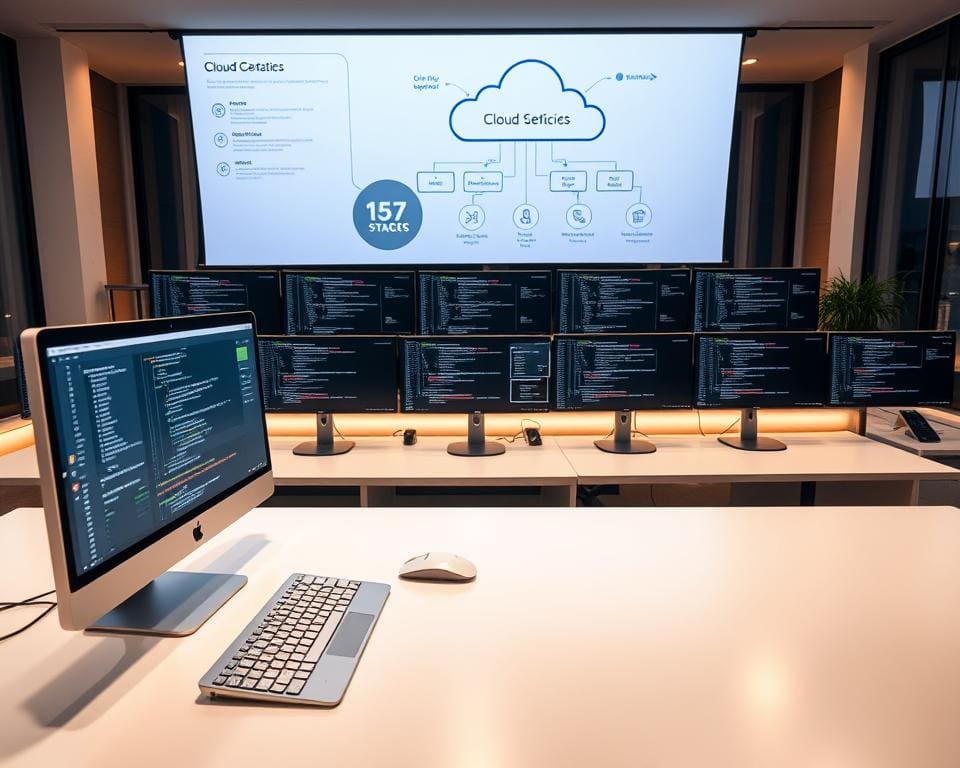In the realm of software development, understanding what are tech stacks is crucial for building effective applications that resonate with users. Tech stacks are essentially a combination of technologies and tools that work in harmony to drive software applications forward. A well-structured technology stack can greatly influence a project’s success, affecting everything from performance to user experience.
For developers and project managers alike, grasping the intricacies of a software development stack is vital in order to select the most appropriate technologies that fulfil project requirements. From frontend frameworks to backend databases, each layer plays a unique role in shaping the final product and ensuring its functionality.
Understanding Tech Stacks in Software Development
In the world of software development, comprehending tech stacks proves essential for crafting efficient applications. An IT Stack not only defines the technologies and tools necessary for development but also sets the stage for organisational cohesion. With the right programming stacks, developers can unite their efforts, ensuring a streamlined workflow that promotes collaboration and innovation.
Tech stacks encompass various web development technologies, allowing teams to select components that best fit their project requirements. The structured nature of these stacks simplifies the decision-making process, aiding in the identification of suitable frameworks and languages while preventing overwhelming complexity.
By establishing a well-designed IT Stack, businesses can experience enhanced productivity. Operational efficiency significantly improves as teams work within a predefined framework, where standards and patterns guide the development process. Keeping pace with advancements in web development technologies further empowers developers to create high-quality software that meets user expectations.

What Are Tech Stacks
In the realm of Software Development, understanding what tech stacks entail is crucial for successful project execution. Tech stacks represent a combination of programming languages, frameworks, libraries, and tools that work together to create robust software applications. This collaborative synergy of technologies is fundamental in shaping the development process and ensuring a project’s success.
Definition of Tech Stacks
A tech stack is an organised collection of technologies that are employed to build and maintain software applications. These technologies encompass both frontend and backend components, allowing developers to create user interfaces and manage server-side interactions seamlessly. The integration of various technologies within a stack enables coding efficiency and scalability.
Importance in Software Projects
The significance of tech stacks in software projects cannot be understated. A well-structured tech stack facilitates:
- Scalability: As user demands grow, the tech stack supports the necessary expansion and adaptability of the application.
- Maintainability: A coherent combination of technologies allows for easier updates, debugging, and overall management.
- Technological Synergy: Components within a tech stack can communicate effectively, leading to streamlined development processes and improved project outcomes.
Ultimately, recognising what tech stacks are and their essential role in Software Development sets the foundation for creating effective and innovative applications.
Components of a Technology Stack
The heart of any software application lies in its technology stack, comprising various components that work together seamlessly. Understanding these components helps in the effective selection and utilisation of Web Development Technologies.
Frontend Technologies
Frontend technologies play a pivotal role in creating the visual and interactive aspects of a web application. Tools such as HTML and CSS lay the groundwork, while JavaScript frameworks, including React and Angular, enhance user experience by enabling dynamic content delivery. These technologies are essential for engaging users and providing a responsive interface.
Backend Technologies
Backend technologies manage the server-side logic, ensuring that data processes run smoothly behind the scenes. Languages such as Node.js and Python are widely adopted for their efficiency and flexibility. By leveraging these backend technologies, developers can build robust applications that maintain high performance and meet user demands.
Databases and Storage Solutions
To effectively manage data, selecting the right databases and storage solutions is crucial. Popular options like MySQL and MongoDB enable efficient data handling, allowing applications to store, retrieve, and manipulate data seamlessly. These storage mechanisms are fundamental to the functionality of any technology stack, impacting its overall efficiency.
DevOps Tools
DevOps tools facilitate the integration and deployment of applications, streamlining workflows in the development lifecycle. Tools such as Docker and Kubernetes enhance collaborative efforts, ensuring that teams can deploy applications with greater efficiency and reliability. Incorporating these tools into the technology stack fosters innovation and speeds up the release cycles.
Frontend vs Backend Technologies
In the realm of programming stacks, the division between frontend and backend technologies plays a crucial role in software development. Frontend technologies are primarily concerned with the user interface and the overall client-side functionality. This encompasses everything that users interact with directly, including the design, layout, and responsiveness of a web application. Popular technologies in this area include HTML, CSS, and JavaScript frameworks such as React and Angular.
On the other hand, backend technologies focus on the server-side operations of an application. These manage crucial tasks like server logic, database interactions, and application performance. They ensure that everything runs smoothly behind the scenes, enabling seamless functionality for the user interface. Technologies such as Node.js, Ruby on Rails, and Python with frameworks like Django are widely used in backend development.
Understanding the distinctions between frontend and backend technologies is essential for developers aiming to create well-balanced and effective applications. The collaboration between these two sides ultimately enhances user experience and overall application performance, showcasing the importance of integrating diverse programming stacks in development projects.
Popular Tech Stacks in 2023
As we traverse through 2023, the landscape of technology continues to evolve, showcasing an array of Popular Tech Stacks that cater to diverse development needs. Understanding these stacks allows developers to build efficient, scalable, and innovative applications. Each of the leading IT Stacks brings its own unique capabilities, making them valuable assets in the software development journey.
MERN Stack
The MERN stack comprises MongoDB, Express.js, React, and Node.js. This combination enables developers to create dynamic web applications with a streamlined workflow. React’s component-based structure fosters reusability, while Express and Node.js simplify backend processes. This stack is particularly favoured for its performance and flexibility in handling large-scale applications.
MEAN Stack
In the MEAN stack, Angular replaces React, focusing on building single-page applications. With MongoDB, Express.js, Angular, and Node.js working in unison, developers can craft rich client-side experiences. MEAN stack’s ability to use JavaScript for both frontend and backend development ensures a cohesive project workflow, making it a popular choice among developers aiming for speed and efficiency.
LAMP Stack
The LAMP stack remains a stalwart in the tech community, consisting of Linux, Apache, MySQL, and PHP. This combination showcases the foundational components of web development, offering stability and security. Although it is one of the older IT Stacks, its adaptability and strong community support ensure its continued popularity across various projects.
The Role of Frameworks and Libraries in Tech Stacks
In the ever-evolving realm of software development, frameworks and libraries have emerged as fundamental components of Programming Stacks. They streamline workflows, enhance productivity, and ultimately lead to more robust applications. Understanding their unique roles can significantly impact the success of any project.
Frameworks Explained
Frameworks provide a structured foundation for developers to build applications. They offer predefined templates and guidelines, allowing for quicker development cycles. Popular frameworks such as Django, Ruby on Rails, and Laravel not only simplify processes but also encourage best practices in coding. Leveraging these frameworks can lead to increased efficiency, enabling developers to focus on functionality rather than repetitive tasks.
Popular Libraries to Consider
Alongside frameworks, libraries play an equally important role in development. Libraries are collections of pre-written code that developers can call upon to execute specific tasks. They facilitate the incorporation of complex functions without the need for extensive coding. Well-known libraries like jQuery and Lodash can significantly reduce development time while enhancing the application’s performance. Embracing these tools helps developers create innovative solutions with greater ease.
Choosing the Right IT Stack for Your Project
Deciding on the appropriate IT stack for your project is a critical step in the software development process. This involves evaluating multiple factors that can influence the overall success and sustainability of your application. The right choices can lead to efficient development and provide long-term support for future innovations.
Factors to Consider
When undertaking the journey of choosing the right IT stack, consider the following key factors:
- Project Requirements: Clearly defined needs will guide your technology selection, ensuring that the chosen stack aligns seamlessly with the project goals.
- Team Expertise: The existing skill set of the development team should inform decisions. Utilising a stack that the team is well-versed in can greatly enhance productivity and reduce learning curves.
- Long-Term Maintenance: Assess how easily the stack can be updated or maintained in response to technological advancements or scaling demands.
Cost Implications
The financial aspect of selecting a software development stack is paramount. Various technologies can have differing costs associated with licensing, development, and maintenance. It is crucial to analyse the budget constraints while ensuring that the quality and functionality of the stack meet project expectations.
Scalability and Flexibility
Future-proofing your project necessitates that you choose a stack capable of scaling alongside your business objectives. Technology that allows for flexibility can adapt to changing needs without requiring extensive rewrites. Opting for a scalable architecture can save both time and resources as your project grows.
The Future of Programming Stacks
The landscape of programming stacks is undergoing rapid transformation, influenced significantly by advancements in Web Development Technologies. Emerging trends promise to reshape how developers construct tech stacks, emphasising efficiency and scalability.
Innovations such as serverless architecture and microservices are becoming increasingly prevalent. These paradigms facilitate greater flexibility and robustness, aligning with current demands for agile development processes. As companies transition to cloud computing, the focus shifts towards leveraging these technologies to enhance deployment and maintenance.
Anticipated shifts in the industry suggest that developers will prioritise frameworks and tools that offer seamless integration with various services. Insights gained from current trends indicate a growing preference for user-friendly programming languages that can simplify complex tasks. The Future of Programming Stacks lies in harnessing these evolving technologies to create more dynamic, responsive applications.
By staying informed on technological advancements, organisations can better prepare for changes in stack preferences. Embracing this forward-looking approach not only enhances development practices but also empowers teams to innovate in ways previously thought unattainable.
Conclusion: Harnessing the Power of Tech Stacks
Understanding what tech stacks are is crucial for anyone involved in software development. The right tech stack can significantly enhance productivity and lead to innovative solutions that align with business objectives. Developers and organisations that are adept at harnessing the power of tech stacks are not just creating applications; they are crafting robust ecosystems that adapt to evolving user needs.
A well-considered technology stack combines various components—frontend, backend, databases, and essential tools—to form a holistic framework. This synergy among technologies enables teams to build applications that are not only efficient but also scalable. By leveraging the right frameworks and libraries, developers can ensure that their projects are both effective and future-ready, ultimately bolstering project success.
As we look towards a rapidly changing technological landscape, it becomes ever more apparent that mastering the nuances of tech stacks stands as a cornerstone of effective software development. Embracing this knowledge will empower developers to create applications that resonate with users while achieving business goals. In the end, recognising and utilising what tech stacks are can truly transform the approach to development, driving innovation and success in an increasingly competitive field.









